North Korea claims ‘nuclear war could break out at any time’ after Pence says US ‘strategic patience’ has expired
North Korea’s Vice Foreign Minister Han Song-ryol told the BBC that missiles would continue to be tested on ‘a weekly, monthly and yearly basis’

US Vice-President Mike Pence put North Korea on notice on Monday that neither the United States nor South Korea would tolerate further missile or nuclear tests by the reclusive state, with the US attack on Syria showing its resolve.
However, senior North Korean officials remained defiant, threatening that “nuclear war could break out at any time” and that the North would “destroy the aggressors without any mercy” should the US strike first.
Pence and South Korean acting president Hwang Kyo-ahn expressed disappointment over China’s retaliatory actions against South Korea in response to the deployment of US missile defence system THAAD in the South, but reaffirmed their plan to go ahead with its deployment.
“We have agreed to further strengthen the readiness posture of ROK-US alliance that matches the threats posed by North Korea through a swift deployment of THAAD [Terminal High Altitude Area Defence],” said Hwang Kyo-Ahn at a joint conference with Pence.
At a White House Easter celebration on Monday, US President Donald Trump was asked if he had a message for North Korean leader Kim Jong Un, and replied: “Gotta behave.”
North Korea’s deputy representative to the UN, Kim In-ryong, accused Washington of creating “a situation where nuclear war could break out an any time” and said Pyongyang’s next nuclear test would take place “at a time and at a place where our headquarters deems necessary”.
North Korea’s Vice Foreign Minister Han Song-ryol told the BBC that missiles would continue to be tested on “a weekly, monthly and yearly basis.”
Kim Song-gyong, director general of the European Department of North Korea’s Foreign Ministry, said that if Washington made “the slightest movement” to make a nuclear strike on North Korea, Pyongyang would strike first and “destroy the aggressors without any mercy.”
He went on to clarify that the approach of a US naval strike force led by the nuclear-powered aircraft carrier Carl Vinson to Korean waters would not be considered enough to constitute “the slightest movement”.
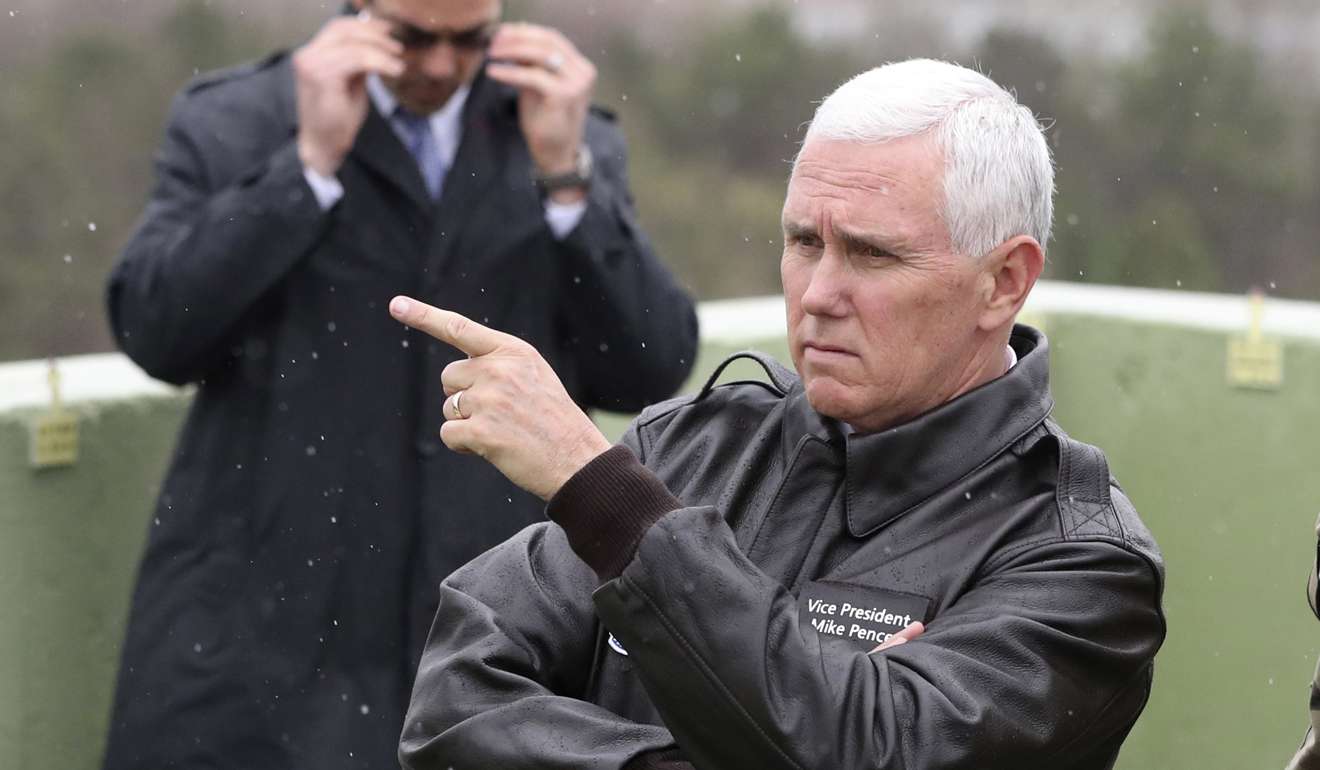
In Beijing, Foreign Ministry spokesman Lu Kang voiced China’s opposition to the THAAD system at a regular briefing, and also urged all parties to work together to maintain peace and stability in the region.
China says the system’s powerful radar is a threat to its security. The United States and South Korea say it is only aimed at defence against North Korean missiles.
Pence is on the first stop of a four-nation Asia tour intended to show America’s allies - and remind its adversaries - that the Trump administration is not turning its back on the increasingly volatile region.
He visited the demilitarised zone (DMZ), a heavily mined, 4km-wide strip of land lined with barbed wire running across the Korean peninsula, with soldiers on both sides in a continual eyeball-to-eyeball standoff.
Pence earlier said he was “heartened” by early signs from China and hoped its leaders would “use the extraordinary levers they have” to prod Kim into giving up his nuclear weapons and ballistic missiles.
He repeated US President Donald Trump’s warning that the US would act without China if necessary.
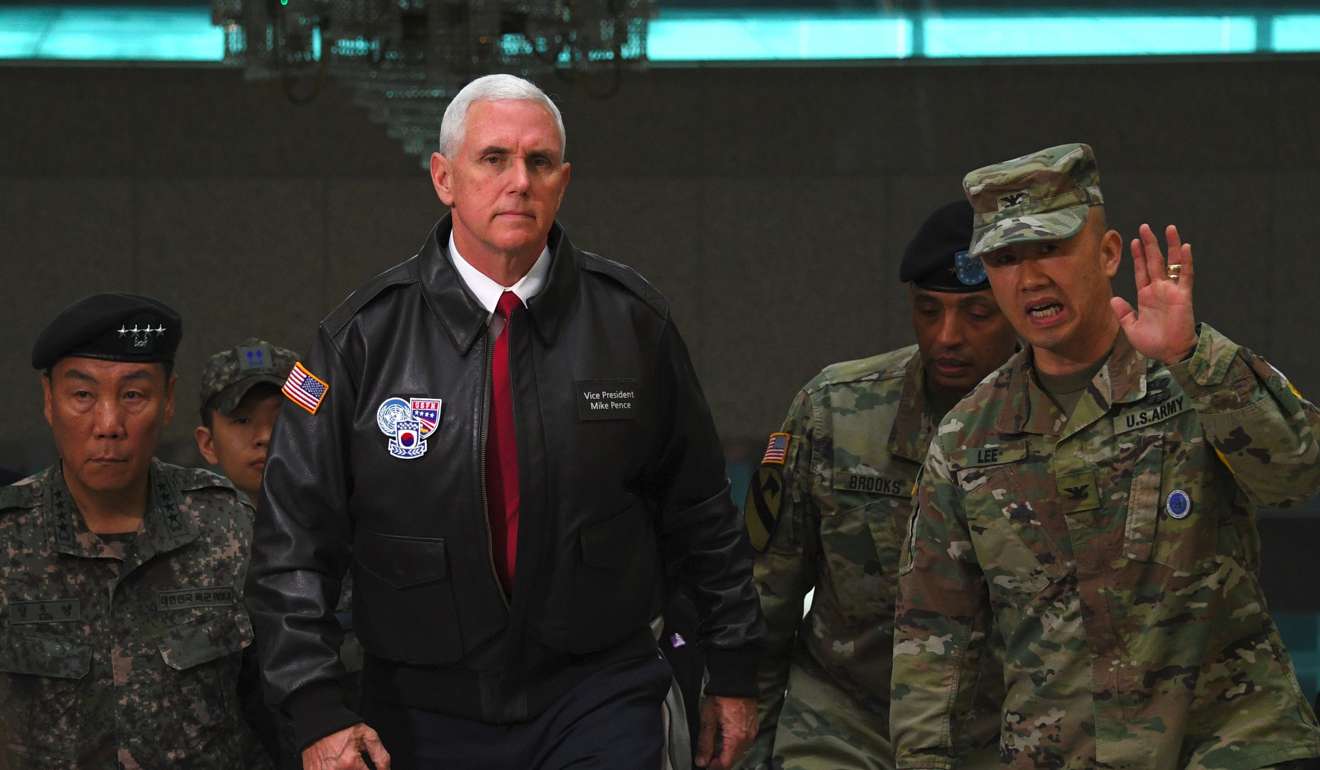
“Either China will deal with this problem or the United States and its allies will,” Pence said. “We want to see change. we want to see North Korea abandon its reckless path.”
Pence, whose father served in the 1950-53 Korean War, said the United States would stand by its “iron-clad alliance” with South Korea and was seeking peace through strength.
“All options are on the table to achieve the objectives and ensure the stability of the people of this country,” he said, adding that Trump had made clear he won’t talk about specific military tactics.

“There was a period of strategic patience but the era of strategic patience is over,” Pence told reporters.
The United States, its allies and China are working together on a range of responses to North Korea’s latest failed ballistic missile test, Trump’s national security adviser said on Sunday, citing what he called an international consensus to act.
Trump’s national security adviser, H.R. McMaster indicated that Trump was not considering military action for now, even as a nuclear-powered aircraft carrier strike group was heading for the region.

“It’s time for us to undertake all actions we can, short of a military option, to try to resolve this peacefully,” he said on ABC’s This Week programme.
“We are working together with our allies and partners and with the Chinese leadership to develop a range of options.
“There is an international consensus now, including the Chinese leadership, that this is a situation that just cannot continue.”
The Trump administration is focusing its North Korea strategy on tougher economic sanctions, possibly including an oil embargo, a global ban on its airline, intercepting cargo ships and punishing Chinese banks doing business with Pyongyang, Reuters reported last week, citing US officials.
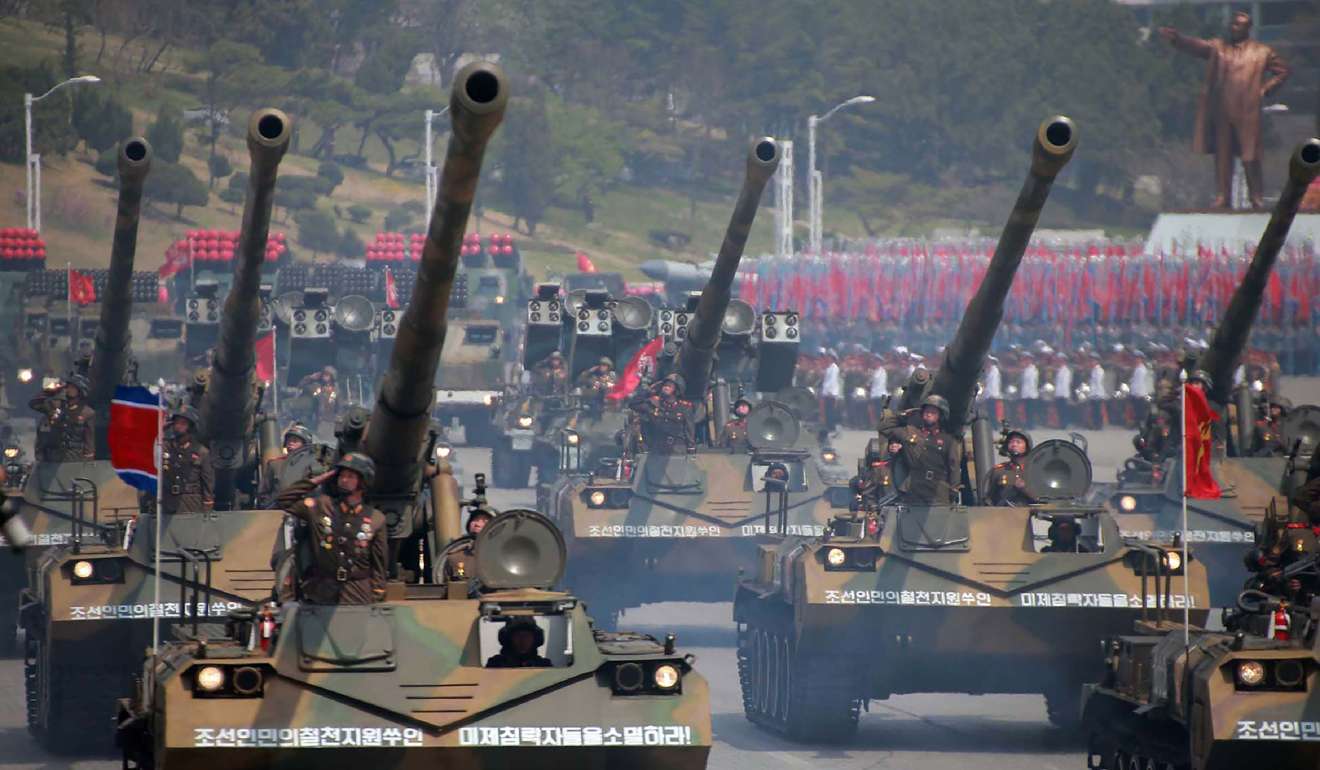
While Trump has employed tough rhetoric in response to North Korea’s recent missile tests, the new US president’s options appear limited in dealing with a challenge that has vexed his Oval Office predecessors.
Most options fall into four categories: economic sanctions, covert action, diplomatic negotiations and military force.
Pence landed in South Korea hours after the North’s failed missile launch. His visit came a day after North Korea held a military parade in its capital, Pyongyang, marking the 105th anniversary of the birth of founding father Kim Il-sung.
Watch: North Korea showcases arsenal at massive military parade
What appeared to be new long-range ballistic missiles were on display in the parade.
Tensions have risen as Trump takes a hard rhetorical line with North Korean leader Kim Jong-un, who has rebuffed admonitions from China and proceeded with nuclear and missile programmes seen by Washington as a direct threat.
Trump acknowledged on Sunday that the softer line he had taken on China’s management of its currency was linked to Beijing’s help on the North Korea issue.
“Why would I call China a currency manipulator when they are working with us on the North Korean problem? We will see what happens!” Trump said on Twitter.
Trump has backed away from a campaign promise to label China in that way.
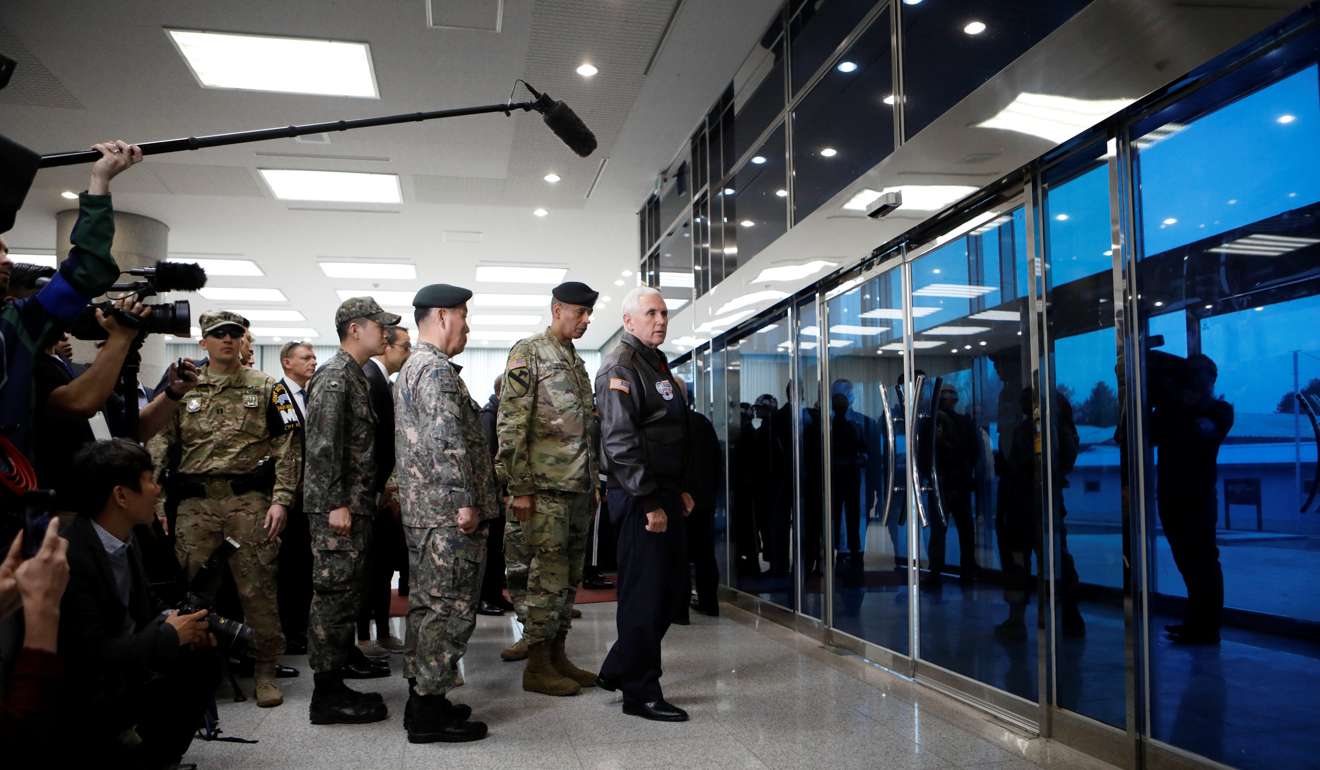
Pence said Trump was hopeful China “will take actions needed to bring about change in policy” in North Korea.
“But as the president has made very clear, either China will deal with this problem or the United States and our allies will,” he said.
Trump’s decision to order a cruise missile strike on a Syrian airfield this month, in response to what he said was Syria’s use of chemical weapons, raised questions about his plans for reclusive North Korea.
China’s State Councilor Yang Jiechi and US Secretary of State Rex Tillerson exchanged views on the situation on the Korean Peninsula by phone on Sunday, China’s foreign ministry said, without giving more details.
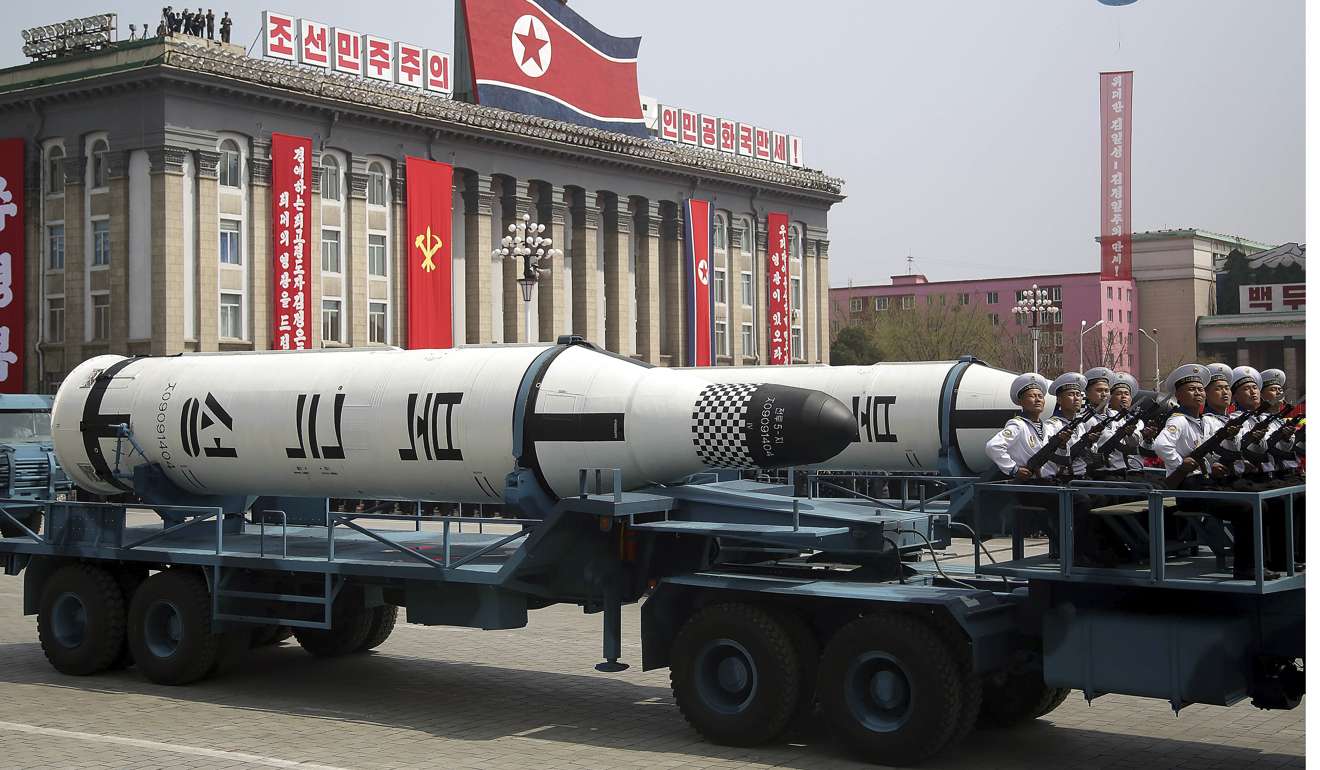
Japanese Prime Minister Shinzo Abe said on Monday that he would also urge China to play a bigger role in resolving tensions over North Korea. US cooperation and diplomatic efforts are also important, he told lawmakers, warning that Kim’s regime is believed to hold a “substantial” amount of chemical weapons and may be able to place sarin on a ballistic missile.
However, a US foreign policy adviser travelling with Pence sought to defuse some of the tension, saying Sunday’s test of what was believed to be a medium-range missile had come as no surprise.
“We had good intelligence before the launch and good intelligence after the launch,” the adviser told reporters on condition of anonymity.
Lu Chao, director of the Border Studies Institute at the Liaoning Academy of Social Sciences, said the latest missile test, despite its failure, could be a message from Pyongyang that it would not change its tough stance in the face of US threats of military action.
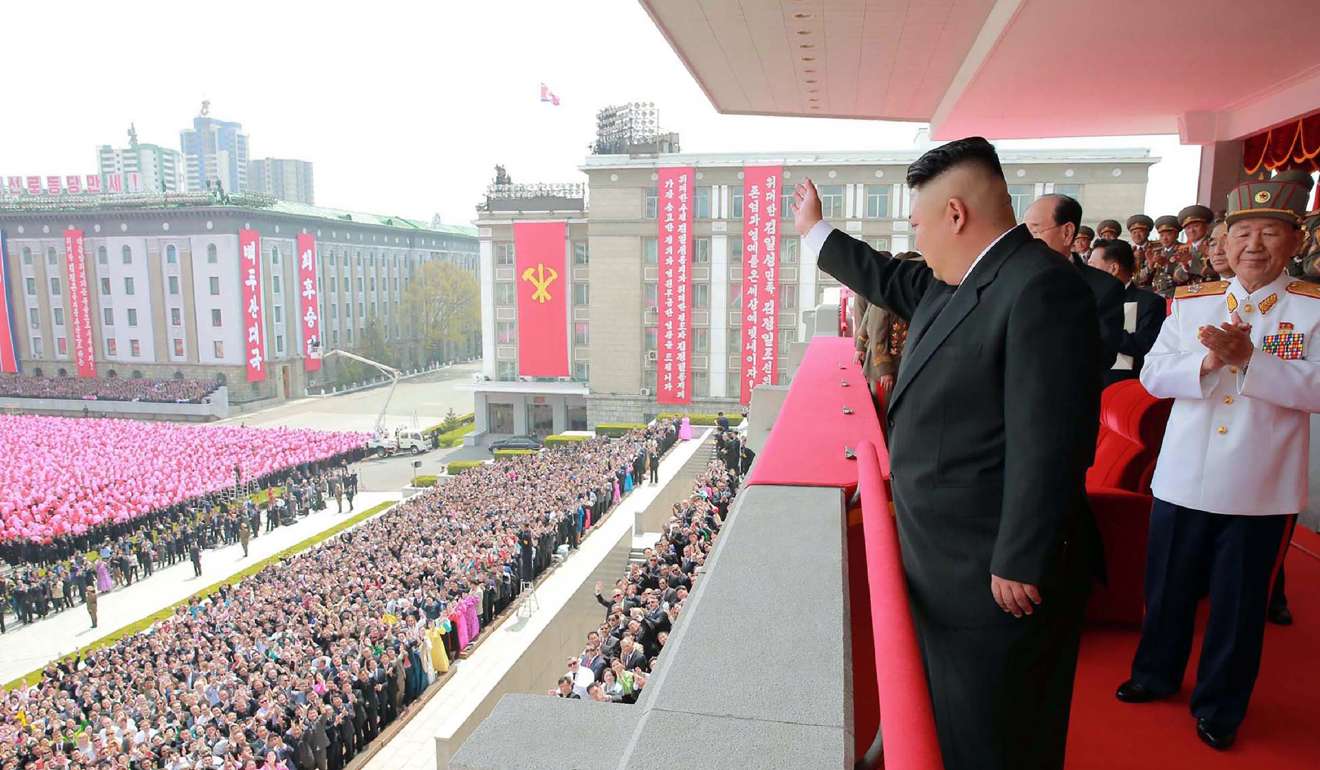
China has spoken out against the North’s weapons tests and has supported UN sanctions. It has repeatedly called for talks while appearing increasingly frustrated with the North.
Beijing banned imports of North Korean coal on February 26, cutting off Pyongyang’s most important export. China’s customs department issued an order on April 7 telling traders to return North Korean coal cargoes, trading sources said.
Pyongyang has conducted several missile and nuclear tests in defiance of UN sanctions, and regularly threatens to destroy South Korea and the United States. North and South Korea are technically still at war because their 1950-1953 conflict ended in a truce, not a treaty.
The North has said it has developed and would launch a missile that can strike the US mainland, but officials and experts believe it is some time away from mastering the necessary technology, including miniaturising a nuclear warhead.
Reuters, Bloomberg